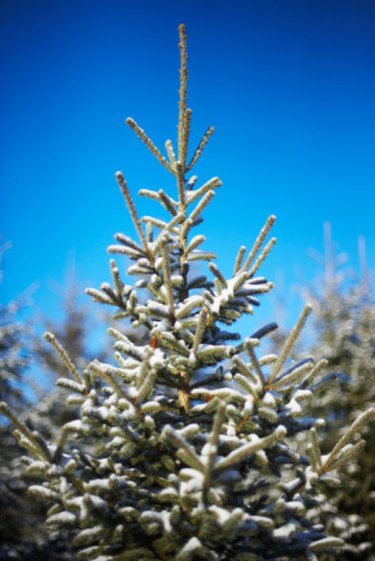
Blue spruce, Picea pungens, is a conifer grown in gardens for its distinctive, stiff, blue-green, needlelike leaves. It is an adaptable, hardy tree grown in U.S. Department of Agriculture zones 2 to 8. Blue spruce grow in a wide range of soils and climates, but dislike mild climates and polluted atmospheres. There are many cultivars of blue spruce, developed for size and shape. Some, like Picea pungens hoopsii, have intense blue-green leaves. Picking the right cultivar is the best way to ensure the leaves of your blue spruce are blue.
Step 1
Pick the blue spruce tree, from the selection at the nursery, that has the bluest color leaves. The blue color of the needles is due to surface waxes. In nature, blue spruce trees grow in small local stands, suggesting that the color of their needles is genetically controlled.
Video of the Day
Step 2
Grow your blue spruce in moist soil in a location with full sun to light shade. These are optimal conditions, but blue spruce trees do tolerate less-than-perfect conditions. Growing your blue spruce in a heavily polluted area may affect the blue color of its leaves.
Step 3
Use a magnifying lens to examine the needles of your blue spruce tree for evidence of Rhizosphaera kalkhoffii, a fungus that causes needlecast disease. The fungus protrudes through the stomata of the affected needles and looks like fuzzy black spots. If not treated, the needles of blue spruce turn purple to brown and eventually drop off. The fungus does not usually kill blue spruce trees. Planting healthy trees and providing proper care prevents infection.
Tip
The color of blue spruce trees intensifies with age.
Video of the Day